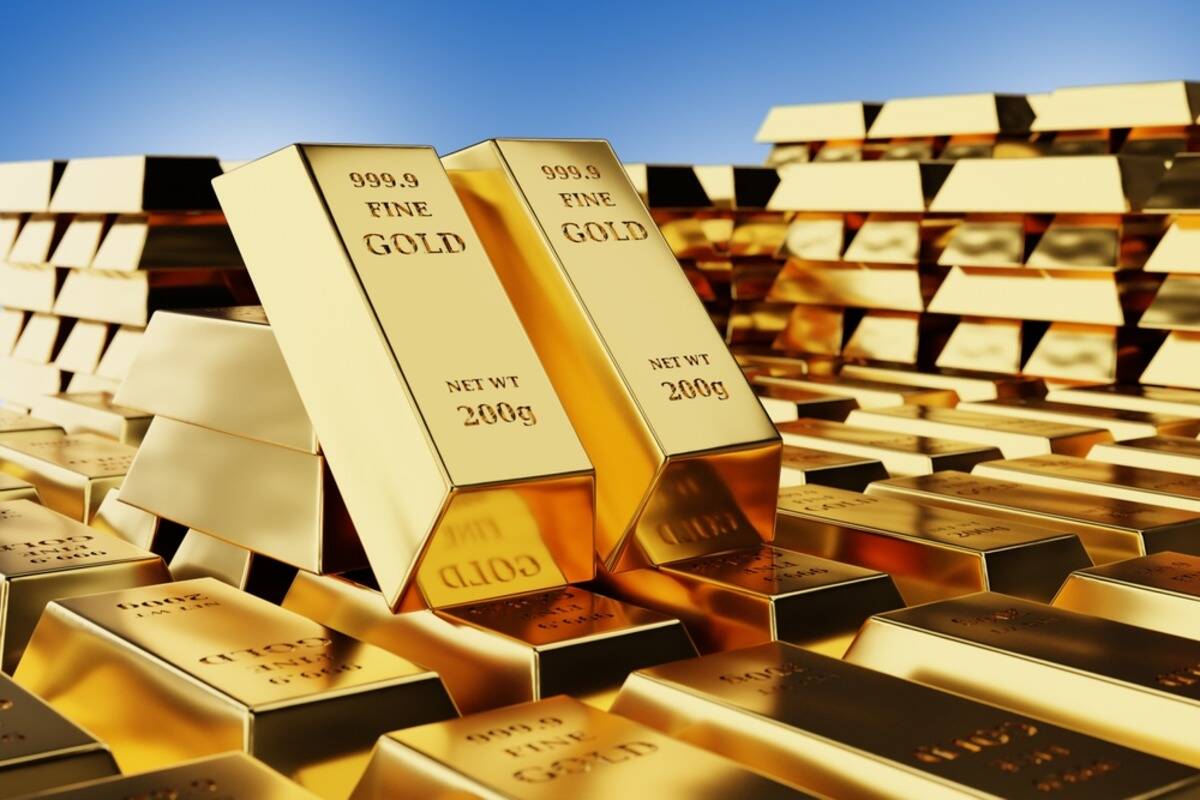Gold prices rose on Monday and hovered near record-high levels reached in the previous session, as investors sought refuge in the safe-haven asset after U.S. President Donald Trump’s fresh tariff plans sparked fears of a global trade war.
In the UAE, gold rates rose, with 24-carat gold gaining AED2.75 to 347.00 and 22-carat gold increasing AED2.5 to AED322.75. Additionally, 21-carat gold rose by AED2.5 to AED309.5. Meanwhile, 18-carat gold increased by AED2 to AED265.25.
Spot gold was up 0.8 percent at $2,882.50 per ounce, as of 06:10 GMT, after hitting a record high of $2,886.62 on Friday. U.S. gold futures rose 0.7 percent to $2,908. Trump on Sunday announced new 25 percent tariffs on all steel and aluminum imports into the U.S., which would come on top of existing metal duties in another major escalation of his trade policy overhaul.
Trump also mentioned that he would announce reciprocal tariffs on Tuesday or Wednesday, set to take effect almost immediately, applying them to all countries and matching the tariff rates levied by each country.
Read more: UAE gold prices rise AED1.25, global rates set for sixth consecutive weekly gain
Trade war concerns elevate demand for gold
Gold is viewed as a safe investment during economic and financial turmoil, yet higher interest rates diminish the non-yielding asset’s attractiveness. Federal Reserve officials stated on Friday that the U.S. job market is solid, highlighting the uncertainty regarding how Trump’s policies will impact economic growth and still-elevated inflation, emphasizing their cautious approach to rate cuts.
Spot silver rose 0.6 percent to $32.00 per ounce, while platinum added 0.3 percent to $979.06. Palladium gained 0.3 percent to $967.74.
Gold prices rose on Friday, hovering near their record high, and were set for a sixth consecutive weekly gain as trade war concerns boosted demand for safe-haven assets ahead of the key U.S. payrolls report.
Trade war uncertainty impacts gold prices
Last week, the World Trade Organization announced that China initiated a dispute over the U.S. tariffs. China also declared tariffs on certain U.S. goods in retaliation to President Donald Trump’s 10 percent levy on Chinese imports. This marked a new trade war between the world’s top two economies, which continued to raise safe-haven demand for gold and further supported the surge in prices.
The Trump administration’s tariff plans come with inflation risks, three Federal Reserve officials warned on Monday. One official argued that uncertainty regarding price outlooks calls for slower interest rate cuts than would otherwise be necessary. With the current U.S. administration creating market uncertainty, and central bank buying showing no signs of slowing down, gold prices are very likely to exceed $3,000 this year.
Job growth slowdown and its implications for gold
U.S. job growth in January decelerated more than expected following solid increases in the preceding two months. However, a 4.0 percent unemployment rate likely provides the U.S. Federal Reserve with justification to hold off on reducing interest rates until at least June. The Labor Department’s closely watched employment report released on Friday also indicated strong wage growth last month, with average hourly earnings experiencing their largest increase in five months, helping to sustain consumer spending. The resilience of the labor market remains a key driver of economic expansion.
Gold is traditionally considered a safe investment during economic and geopolitical turmoil, yet higher interest rates reduce the appeal of the non-yielding asset. U.S. Treasury Secretary Scott Bessent stated on Thursday that the Trump administration was not particularly concerned about the Federal Reserve’s trajectory on interest rates and is focusing on lowering 10-year Treasury yields. The yield on the benchmark 10-year U.S. government bond fell to its lowest level since December 12 earlier this week amid expectations that the Fed will cut rates twice by the end of 2025, further benefiting gold prices.








